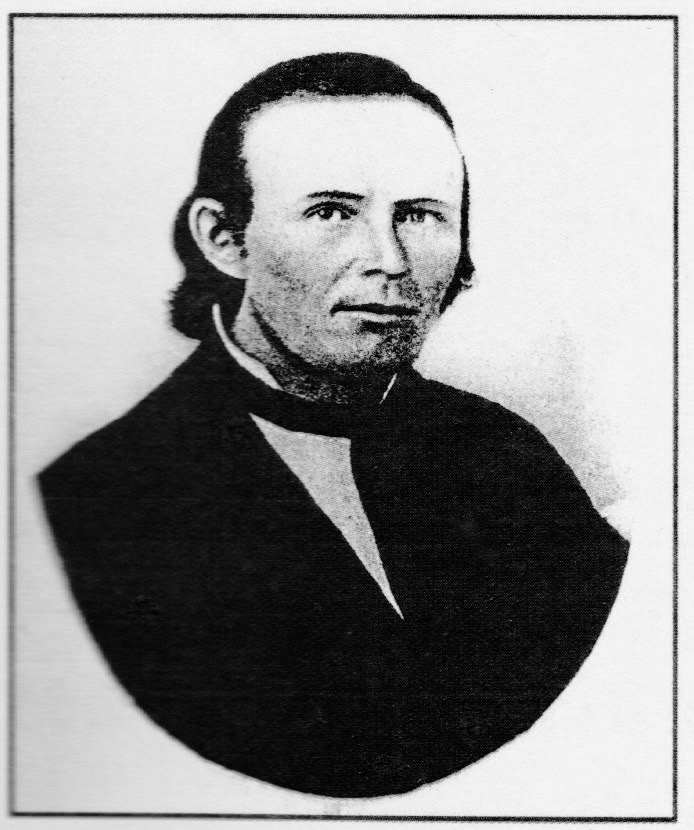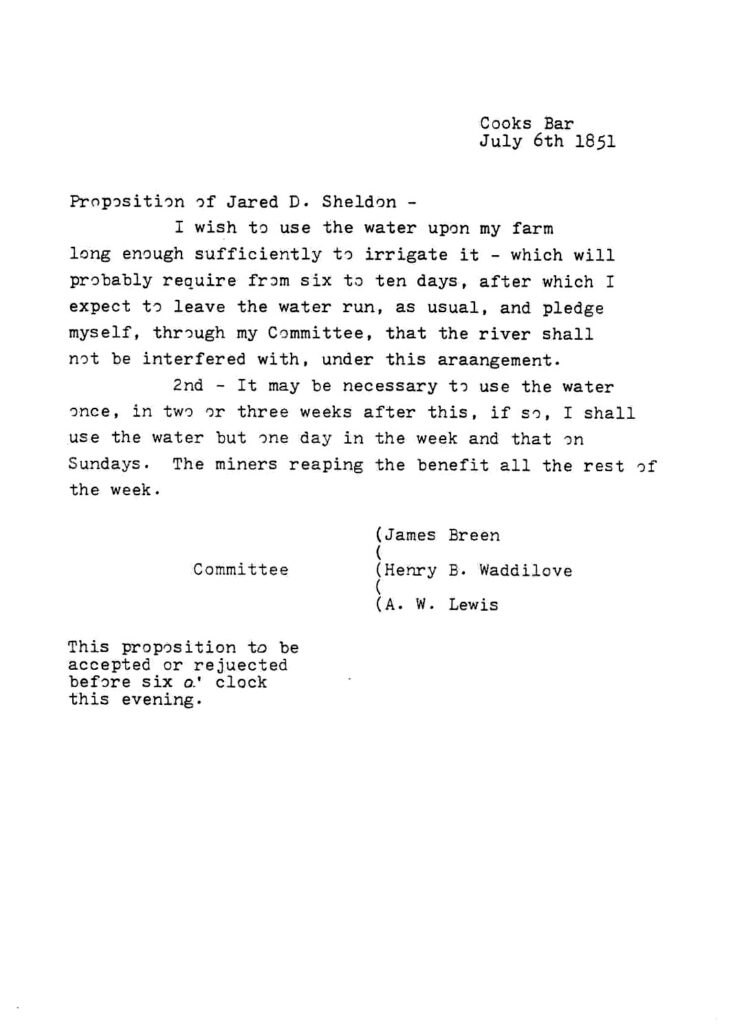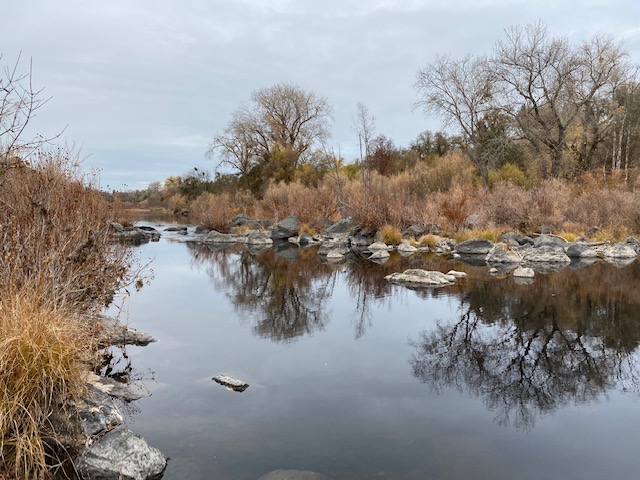
Jared Dixon Sheldon (1813-1851) owned all the land from Grantline Road to the Cosumnes River as part of the Omuchumnes Land Grant that he was awarded from the Mexican government. Sheldon built the first house on the slough. It was later called “the slough house.” Sheldon gave half of his grant to his friend and partner, William Daylor (1810-1851). Later the two friends married the Rhoads sisters, Catherine (1832-1905) and Sarah (1830-1898) both in 1847. Jared was 34 and Catherine was 15 and William was 37 and Sarah 17, and so it was in those days. The two families were the first settlers on the Cosumnes River, other than the migrating Miwoks of course, living in the present day Sloughhouse area. Most of the history of Sloughhouse is connected to those two families even though both Sheldon (41 years old) and Daylor did not live very long and both died in 1851. Sheldon (41 -years-old) was killed in a gunfight by miners because he was daming up a stream on his property during the Gold Rush and Daylor (38-years-old) died of Cholera.
An earthen Dam constructed by Jared Dixon Sheldon to provide water to his Omochumnes Rancho. The construction of this Dam had the potential to cause gold mining claims located upstream of the dam to be flooded by the rising water. On Sunday July 12, 1851 in an example of “gold rush justice” the conflict between the farmer and the gold miners erupted in gunfire in what was known as a “Riot on the Cosumnes.” At the end of the melee three men lay dead: Jared Dixon Sheldon, James M. Johnson and Edward Cody and three more were wounded, they were Calvin Dickerson, Emanuel Bush and an unnamed miner. This event marked the first but by no means the last time that Farmers and Gold Miners fought over the control of California water.
Here is a copy of the actual dam proposition submitted by Jared D. Sheldon to the committee for usage:

The plaque displayed at the dam site says:
“Jared Dixon Sheldon, pioneer and owner of the land grant in Sloughhouse, originally from Vermont, also owned 300 acres at this location. To supply water to his crops south of the river he built a dam 16-ft high, double-walled of heavy oak, and filled with large stones. On July 12, 1851, he was shot and killed by 40 to 100 angry miners in the river below this point. Also killed in the shootout were 2 of Sheldon’s 12 friends, James M. Johnson of Iowa and Edward Cody of Illinois. Three men were wounded, including a miner.”
“The prevailing miners destroyed the sluice gate in the dam. They had unrecorded gold mining claims in the river-bottom on Sheldon’s land, which would be flooded by the rising water upstream from the dam. Subsequent floods continued the dam’s destruction, and hydraulic mining in Michigan Bar buried the remnants in silt. Public right of access to California streams was not clarified until 1879.”


This is what has been written describing the dam:
“The Sheldon Dam on the Cosumnes River upstream from Bridge House and Cooks Bar was made with an oak inner structure filled with rock. A double line of upright oak poles approximately 20 to 25 feet long were embedded into holes cut into the rock of the river bed 4 to 6 feet apart. The two rows of poles were also four to six feet apart creating a dam frame 16 feet tall. Oak braces were installed between the two rows as well as between the poles to keep them upright during construction. The dam was formed of half rounds oak trunks fit together horizontally like a log house – cut to fit each other; holes bored between the half round made to fit oak dowels the size of a 50 cent piece, fastened the poles together solidly. The Sluice Box in the center of the dam was equipped with a sluice gate like the mill gate at Sheldon’s Grist Mill Race, that could be lowered to form a reservoir to the top of the dam or raised to release the water and allow the river to flow naturally. All of the mechanisms of the gate were iron set in oak.”
“A ramp was made to the top of the dam structure on Sheldon’s end of the dam. Sheldon and his workman built a “drag”, a crude sled made of oak poles 8 to 10 feet long joined together, to be pulled by a team of horses. The men then took the team and “drag” to the fields and river banks, rolled large rocks onto the “drag” and hauled them to the dam site and filled the dam structure with these stones. (not round river rocks) Rock was also placed on the down stream side of the dam to brace it.”
Sheldon’s Dam was a solid well constructed dam. Like those made in Vermont and Europe.
Researched and written by Ellen Cothrin Rosa, historian and great grand daughter of Jared Dixon Sheldon.
After over 170 years, most remnants of the dam are pretty much gone, but you can see a large grouping of rocks that partially obstruct the river and it makes sense that this would have been a good foundation for the dam. The rest of the river on either side seem pretty free of large debris. It is at this site of where the historic marker erected by the Native Sons of the Golden West in 2008 is located.






The location of the dam is on the north side of Rancho Murieta and is only accessible through either of the two main gates. (Note: To enter Rancho Murieta you need to get permission from one of the residents to be allowed in. You may be lucky and get a generous guard, but usually they will call the resident. – Plan ahead if you desire to see the site) They have a nice golf cart path that passes right by the plaque.